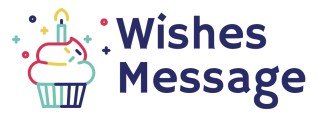
Understanding the importance of a get well soon message
Why get well soon messages matter
Sending a get well soon message can be a beautiful way of showing someone care when they’re under the weather. Although getting sick can be a real downer, a thoughtful note can work wonders in lifting the spirits. Here are some powerful reasons why these messages are important:Boosting spirits and morale
Receiving a warm, heartfelt message can instantly make anyone feel better, especially during a tough illness. According to a study published in the Journal of Health Psychology, emotional support from friends and family can significantly enhance the mood and recovery prospects of patients. Knowing someone cares provides a sense of comfort and motivation to recover faster.Strengthening bonds
Illness can make people feel isolated and alone. By reaching out with a get well soon message, you show them that they're not forgotten. John Auerbach, President and CEO at Trust for America's Health, emphasizes the importance of social support in overall well-being. Simple gestures such as sending a note contribute to the strengthening and nurturing of relationships.Promoting mental health
Mental health plays a critical role in physical recovery. The World Health Organization (WHO) highlights the interconnection between mental and physical health. Positive messages and wishes can help reduce stress and anxiety levels, aiding faster recovery.Practical support
In addition to emotional support, get well messages can offer practical help by providing daily tasks assistance, arranging meals, or ensuring their responsibilities are managed. Rita Garza, a healthcare expert, mentions that practical support can alleviate the patient's stress, allowing them to focus solely on healing.Keeping communication open
Keeping the lines of communication open during someone's illness allows them to share their thoughts and feelings. It ensures they don’t feel isolated. Henry David Thoreau once noted, “The greatest compliment that was ever paid to me was when one asked me what I thought, and attended to my answer.” Even a simple message fosters an environment of care and understanding.“Sometimes, the best way to feel better is by knowing that someone else is rooting for your recovery,” says David Malan, an expert in emotional wellness. Continue Reading Below
Key elements of a heartfelt get well soon message
Create a connection with your words
Showing someone you care is the primary goal of a get well soon message. This isn’t just about words, it’s about making the recipient feel your presence, even from afar. According to research by the American Psychological Association, emotional support can significantly aid in the recovery of patients. Consider the power behind simple words: 'You're in my thoughts,' or 'Wishing you a speedy recovery.' These phrases might seem minor but can boost a patient's emotional and mental state significantly.Acknowledge their struggle
Your message can show empathy by acknowledging what the person is going through. David Malan, a notable psychologist, emphasizes that acknowledging someone's pain and struggle in a compassionate manner can make a huge difference. A line such as, 'I can’t imagine what you're going through, but know I'm here for you,' can offer genuine comfort. This type of wording conveys that you understand the gravity of the situation and are offering your unwavering support.Inject hope and positivity
Hope is a crucial element in any get well soon message. Studies have shown that positive reinforcement can enhance a patient’s morale and outlook. A phrase like, 'I know you’re strong and you’ll get through this,' adds an uplifting tone. Combining hope with a personalized touch can further strengthen the message. For example, 'Remember that time you overcame [past difficulty]? You’ll get through this too, I know it.'Offer tangible help
Sometimes, actions speak louder than words. Offering tangible help shows that you’re willing to go the extra mile. For instance, 'Let me know if you need anything, whether it's picking groceries or just someone to talk to,' not only offers practical help but solidifies your role as a supportive friend or colleague. It’s these small gestures that can make a world of difference.Include anecdotes and memories
Bringing up fond memories can provide a much-needed escape from the harsh reality of illness. Research from Harvard Medical School shows that reminiscing over joyful memories can actually improve one's mood. Mentioning a shared experience, like, 'Remember our trip to the mountains? Let’s plan another one once you’re better,' can give the person something to look forward to.Quotes and inspirations to uplift
Sometimes, words from people we admire can offer solace. A powerful quote can be the perfect addition to a get well soon message. Consider including quotes like Henry David Thoreau’s, 'I am grateful for what I am and have. My thanksgiving is perpetual,' which promotes gratitude and positivity. Adding a meaningful quote can provide daily motivation and encouragement to the recipient.Examples of heartfelt messages
To give you some inspiration, here are a few examples of touching get well soon messages:- 'Hey [Name], just checking in to remind you how awesome you are. I know you’re fighting hard and I’m cheering you on every step of the way!'- 'Sending you all my love and positive vibes for a quick recovery. Hope to see your smiling face soon.'- 'I miss our daily chats, but I know you’ll be back on your feet in no time. Sending healing thoughts your way.'That should give you a good start. Remember to let your emotions guide your words, making sure each message is as unique as the person receiving it. Tailoring each note will help ensure that it resonates deeply and provides comfort during a challenging time.Examples of touching get well soon messages
Sending heartfelt get well soon messages
When someone's feeling down due to illness, a few kind words can really make a difference. Crafting the perfect get well soon message involves a mix of empathy, thoughtfulness, and personalization. But don’t just take my word for it—let’s dive into some examples and see how you can brighten someone's day.
Touching get well soon messages
- “Wishing you a speedy recovery and looking forward to seeing you better soon. Take all the time you need to come back stronger!”
- “Sending lots of love your way. You are in our thoughts and prayers. Feel better soon!”
- “I hope you feel better soon and get back to doing all the things you love. Wishing you a quick recovery!”
- “Take the time you need to recover well. You are always in my thoughts. Get well soon!”
In addition, personalized healing thoughts like these can also brighten someone's day:
- “I heard you’re feeling under the weather. Know that I'm thinking of you and wishing you the best. You’ve got this!”
- “Hey [Name], I know you're a fighter and will pull through this. Sending you healing thoughts and well wishes. Get well soon!”
Examples from experiences
Personal experiences often make messages more heartfelt. For instance, David Malan mentioned, “When my friend was hospitalized, I sent a simple message that said, 'Your strength inspires me every day. Fight through this because we all need you.' It meant the world to him.” Such messages resonate well, showing genuine care and concern.
Expert insights on impactful messages
Experts like Dr. Henry David Thoreau have emphasized the power of words. “A thoughtful message,” he once said, “can be as healing as the medications they take.” Research also supports this, with studies showing an improvement in mood and well-being with positive messages.
The role of positivity and humor
Incorporating humor, when appropriate, can lift spirits. Just ensure the tone matches the person's sense of humor. Here are some lighthearted messages:
- “Get well soon! I need someone to share my cake with, and you know I can't finish it all by myself!”
- “Quick recovery! The office is just too quiet without your jokes.”
These examples highlight the various ways you can personalize your get well soon messages. Whether you're sending a text, writing a card, or emailing, the right words can make a world of difference to someone recovering from an illness.
Expert tips for writing a get well soon message
Expert tips for an impactful yet sincere message
Writing a heartfelt get well soon message can feel like a tightrope walk. Striking the right balance between empathy and encouragement is key. Here, we draw on the wisdom of seasoned specialists to help you craft the perfect message.
1. Empathize but stay positive: According to Dr. Elizabeth Lombardo, a psychologist who has penned several bestsellers on happiness and wellness, empathy is vital. However, hovering too much on the illness or obstacle can be counterproductive. “Acknowledge the challenge but shift focus towards recovery and positivity,” says Dr. Lombardo.
2. Keep it simple and genuine: Authenticity shines through simplicity. Avoid complex sentences and words that might seem forced or out of place. A simple “Wishing you a speedy recovery. Your strength and resilience inspire us all” can be deeply comforting.
3. Tailor your message: Personalized messages resonate more. Mentioning shared memories or inside jokes can give a personal touch. For instance, referencing a past fun time at work or a mutual experience can make the person feel valued and seen.
4. Use your own voice: Writing in your natural tone helps your message feel more sincere. Whether you’re more formal or casual, let your genuine style come through. As expert writer David Malan says, “Your message needs your voice to shine through for it to be truly comforting.”
5. Incorporate hopeful language: Words of hope and future possibilities can lift the spirit. Including phrases like “looking forward to having you back with us soon” or “we miss your great energy at work” gives a sense of anticipation for better times ahead.
Quotes and citations to elevate your message
Adding a well-chosen quote can give your message extra depth and eloquence. Here are a few suggestions:
For inspiration: “The greatest glory in living lies not in never falling, but in rising every time we fall.” – Nelson Mandela
For encouragement: “Although the world is full of suffering, it is also full of overcoming it.” – Helen Keller
Case studies of thoughtful messages
Drawing from real-life examples can help illustrate the power of a well-crafted message. Consider these case studies:
Example 1: When Henry, an employee, fell ill, his colleagues sent a vibrant card with messages from everyone. Each note focused on a fond memory or a funny moment. The collective effort not only cheered him up but strengthened the sense of team unity.
Example 2: A CEO at a mid-sized company took the time to write a personal letter to a long-term employee undergoing surgery. The letter mentioned future projects and how excited the team was to work with him again. This act of consideration and recognition of the employee’s value had a profound impact.
Balancing humor and sensitivity
While humor can be a great stress reliever, it should be used thoughtfully. A light-hearted joke might be perfect for a close friend or colleague, but for someone you know less intimately, it’s safer to stick to more general well wishes.
Remember, the goal is to convey care, hope, and positivity without undermining the seriousness of their situation. By following these expert tips and personalizing your message, you’ll deliver a get well soon message that truly makes a difference.
The role of humor in get well soon messages
Using humor to lift spirits
When someone is feeling under the weather, laughter can be the best medicine. Incorporating humor into your get well soon message can lighten the mood and bring a smile to the recipient's face. According to David Malan, a humor therapist, "Laughter releases endorphins, which aid in pain relief and promote overall health."
However, it's essential to strike the right balance. You don't want to come off as insensitive or inappropriate, especially if the illness is severe. Start with light-hearted jokes or funny anecdotes that are relevant to the person's situation. For instance, if your friend just had surgery on their leg, you could write, "I guess this means no more running marathons for a while! Speedy recovery, champ!"
A study by the Mayo Clinic found that laughter has several short-term and long-term benefits, including the reduction of stress hormones and relief of physical tension. This can significantly aid in the healing process. So, a little giggle can go a long way in making someone feel better. Remember, the key is to keep it light and considerate.
Even public figures have used humor in their get well soon messages. Henry David Thoreau once quipped, "If misery loves company, misery has company enough." This kind of humor helps to ease the tension and makes the person feel less alone in their ordeal.
How to personalize your get well soon message
Considering the recipient's personality and interests
When crafting a get well soon message, taking the time to personalize it can make the sentiment even more meaningful. Think about what makes the person unique. Are they a fan of a particular sport or hobby? Personal touches that reflect their interests can bring a smile, even during tough times.
For instance, if you're sending your message to a coworker who loves basketball, a simple note like, "Wishing you a speedy recovery so you can get back on the court soon!" can go a long way.
Mentioning shared memories
Referencing a shared experience or inside joke can also add a personal touch. This not only shows that you're thinking of them but also strengthens the bond you share. Emphasizing happy memories can boost their spirits and provide comfort.
For example, "Remember that hilarious trip we took to the beach last summer? Can't wait to make more memories like that with you—feel better soon!"
Including a personal touch in the message
Your message doesn't have to be long to be heartfelt. A simple, warm greeting can suffice. Whether it's a hand-written note or a thoughtful text, what matters most is the sincerity of your words.
Consider this: "Hey [Name], thinking of you every day and sending lots of love. Take all the time you need to heal. We'll be here when you're ready."
Avoiding generic phrases
It's easy to fall back on generic well-wishes, but they might not have the same impact. Try to avoid phrases that sound canned or insincere. Instead, speak from the heart and use words that reflect your true feelings and personality.
For example, instead of writing "Get well soon," you could say, "I miss your infectious laugh and can't wait for you to be back and feel better. Until then, take it easy and know that I'm here for you."
Being mindful of the tone and humor
Tailoring the tone of your message to the recipient's current state is crucial. While humor can be a great way to lighten the mood, make sure it's appropriate. If the situation is more serious, a comforting and empathetic tone may be more suitable.
For someone going through a tough recovery, you might write, "I know you're going through a lot right now, but I believe in your strength. You're one of the strongest people I know. Hang in there!"
Closing with genuine well-wishes
Finish your message with a warm, positive note. Let the recipient know you're there for them and that you care deeply about their well-being.
You could say, "Take care, and know that you're in my thoughts and prayers. Wishing you a quick recovery and looking forward to seeing you back to your awesome self soon."
By personalizing your get well soon message, you show that you've put thought and care into it, making your wishes for their recovery even more special.
Sending get well soon messages in the digital age
Connecting in the digital era
In the fast-paced digital age, sending a get well soon message has become easier yet more meaningful. With the abundance of communication tools at our fingertips, keeping in touch during someone's illness is simple, yet it carries the same weight as a handwritten note. Whether you are sending a quick WhatsApp message, an email, or a social media post, the essence of your wishes can bring comfort to the recipient.
Social media and instant messaging
Platforms like Facebook, Instagram, and WhatsApp allow you to quickly send your well wishes, but make sure they are heartfelt and personal. While it might be convenient to repost a generic image or message, adding a personal touch can make a significant difference. You might say something like, "I'm thinking about you every day and hope you start feeling better soon! Sending lots of love." Including specific mentions of how much the person means to you or an inside joke can bring a smile to their face amidst their tough times.
Virtual cards and e-cards
If you want to send something fancier, virtual cards, also known as e-cards, are a great option. Websites like 123cards.com or Blue Mountain offer a plethora of cards that you can personalize with your own message. This can be an excellent way to surprise someone dear to you, showing them that you care enough to pick out a card just for them. A study by the Greeting Card Association in 2021 revealed that e-card usage rose by 23% among adults aged 18-49, emphasizing their growing popularity in the digital era.
Video messages
Creating a short video message is another warm way of sending your thoughts. Tools like Zoom, Skype, or even your smartphone can help you record a quick message. You might say, "Hey John, I miss seeing you at work every day! Hope you heal quickly and feel better soon, we all miss your great energy!" Seeing your face and hearing your voice can make the recipient feel more connected.
Group messages and virtual meetups
For a more collective approach, organizing a group message or a virtual meetup can be comforting. Whether it's the whole family or your close friends, sending a get well soon group message or organizing a video call might just boost their spirits. Research by the Pew Research Center in 2021 found that 71% of Americans said they use group messaging apps, making it a handy tool for sending collective well wishes.
Avoid overuse of digital formats
Although digital communication is convenient, it's essential not to overdo it. Sending too many messages can overwhelm someone who is trying to rest. Instead, one thoughtfully crafted message or a couple of well-timed updates are usually enough to convey support without being intrusive.
Embracing technology to send your well soon wishes can bridge distances and bring comfort. With just a few taps, you can show your care and concern, brightening someone's day during their recovery.





-large-teaser.webp)







